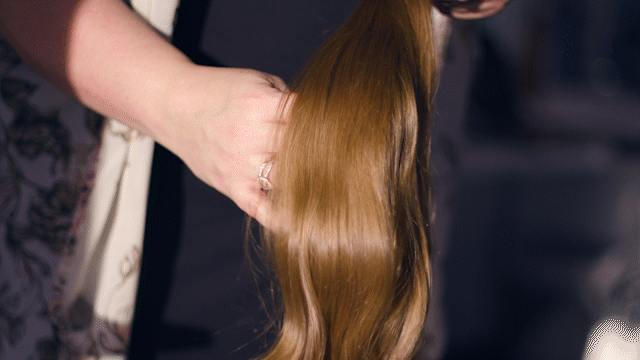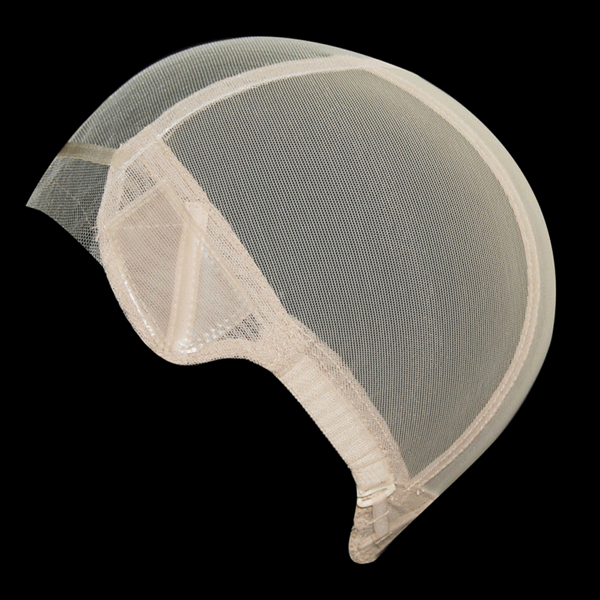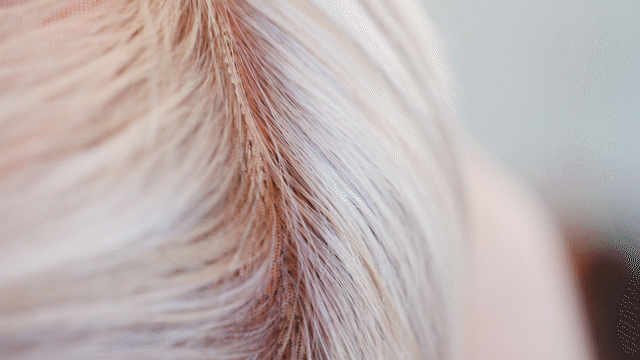The Top Five Factors That Influence the Cost of a Human Hair Wig

Hair loss is a stressful experience. Entering the world of wig buying is a big step in owning your hair loss journey. With so many options to choose from, you may be confused about where to start. After all, you want to make sure that the wig you choose represents you and is right for you and your budget. There is such a range of wig prices. Some wigs come with a hefty price tag while others seem like a steal. Without knowing what influences the cost of a wig, you may feel like you’re jumping into the unknown potentially risking time, money, and energy.
At Daniel Alain, we have helped thousands of women find a wig that is the best wig for them, even if it was not one of our pieces. We’re committed to helping you feel unashamed about your hair loss and finding the right wig is a huge part of that journey.
One of the biggest determiners of wig cost is the type of hair you choose to wear: Synthetic or human hair. In this article, we’re going to break down the different factors that account for the wide range of pricing in human hair wigs. Not all human hair wigs are created equally. The primary differences in human hair wigs come down to the quality of materials used and labor practices. By the end of this article, you will feel more confident in choosing a wig that fits your budget and lifestyle needs.
1. Type of Hair Used in Human Hair Wigs

Human hair wigs are usually made from two types of hair sources: European or Asian hair. Other countries that are often hair sources include South American countries such as Brazil or Chile.
European Hair
European hair wigs come with a higher price tag than Asian hair wigs. In the 90s and early 2000s, many women in Ukraine and Russia sold their ponytails to support themselves, especially in the wake of the collapse of the Soviet Union. Women were offered an entire month’s income for a ponytail of hair, which resulted in a high volume of hair collected over this period. As economic conditions improved, women did not need to sell their hair, shortening the supply of authentic European hair.
Today, European hair is in scarce supply. If a wig is advertised as a 100% European hair wig, it is likely the hair was collected a long time ago and the manufacturers have a good supply. Because of its rarity along with its fine, smooth, silky texture, it is a material that is in low supply and high demand.
Asian Hair
Historically, Asian women also sold their hair to support themselves. Because China is known as the wig capital of the world, exporting 70% of the world’s wigs, hair collection is still in practice. This hair is primarily gathered from floors, sinks, and hairbrushes and then sold to wig-making factories. Often, the hair cuticles are not flowing in the same direction, arriving at the factory unwashed and unruly. The hair is not separated, mixing different hair types and textures.
To expedite the wig-making process, hair is dumped into a large bowl to be washed and processed. The hair is stripped of any cuticles through acid baths, leaving the hair dry and unnaturally shiny. To help smooth and soften the hair, it undergoes highly concentrated silicon treatments that eventually wear off, leaving the wig dry and prone to tangling.
Because hair collection is still in practice, there is a higher supply of Asian hair, lowering the price of a human hair wig made from Asian hair sources.
Some wig manufacturers source ponytail hair, usually from Indian or Chinese women, with an intact cuticle, which leads to a higher quality wig. Without soaking the hair in acid baths, the hair maintains its quality, allowing it to hold different hairstyles more effectively and achieve more volume than European hair.
2. Cap Materials Used in Wigs

A wig cap is a key part of a wig’s comfort level. Wigs whose caps are made from materials such as lace or silk are more expensive than caps that are made from cheaper materials such as nylon. Nylon caps have a very distinct hairline that may not align or comfortably mold with your natural hairline. The material can also be scratchy, stiff, and uncomfortable. By contrast, wigs made from soft lace are more comfortable, less prone to irritation, and are more likely to align with your natural hairline.
3. Length and Color of the Wig
One of the more obvious factors that impact price is hair length. A longer wig costs more than a shorter wig – particularly if the wig is made with premium European human hair. However, color also impacts the price of a wig. Blonde, lighter wigs are more expensive than brunette, darker wigs. Put simply, a lighter wig undergoes more treatments to achieve its lightness, which requires more time and materials. The type of dye used in the manufacturing process also impacts a wig’s price.
Many companies will use carpet dyes and bleach on mass quantities of hair to lighten and color the pieces. By contrast, higher-quality human hair wigs are often colored in small batches, using high-quality hair dye. Colorists train for years to learn how to create the perfect combination of dyes so each unique batch of hair can achieve the standard color.
4. How a Human Hair Wig is Made
High-quality human hair wigs require specialized attention during every step of production. Meticulous training and practice produce wig-making experts who are dedicated to creating only the finest wigs within their craft – similar to haute couture in fashion. In contrast to mass-produced hairpieces, wigs that are made by skilled, talented artists can take up to a month to make. This careful construction leads to a higher quality, longer-lasting, more natural-looking wig as compared to a machine-made wig.
How Do Labor Practices Impact Cost?
Factories that engage in mass production often have lower working conditions for their workers. Poor ventilation for workers who work with toxic chemicals such as bleach will offer cheaper wigs, at the expense of their employees and the quality of wigs. Offering fair wages, better working conditions, and hiring skilled artists will inevitably make a wig more expensive. In addition to labor conditions, attention to detail and true craftsmanship plays a big factor in the price of a wig.
5. Wig Cap Ventilation and Hair Density

The ventilation of a wig is defined by the way the hair is tied onto the cap. The way a cap is ventilated will impact the cost and lifespan of a wig. Hand-tying a wig leads to a higher-quality and more natural appearance of a wig. But not all forms of hand-tying are the same. To ventilate a wig, hair is tied in knots through minuscule holes to secure it on the cap. Some companies have four or five hairs per hole, which speeds up the process.
By contrast, some companies will only have one hair per knot. This takes 4-5 x as long to ventilate the cap. The single knot method results in a tighter knot and more natural movement whereas multiple hairs in a knot can be looser, look less natural, and shed at a faster rate. This decreases the lifespan and integrity of the wig versus a wig that has single knot ventilation.
Does a more expensive wig mean it will last longer?
Yes and no. Generally, a more expensive wig will last longer because of the higher production quality and the attention to detail in making the wig. However, the biggest factor in the longevity of a wig depends on how well it is cared for. Various factors such as how your wig is washed, styling methods, and your lifestyle will impact the wig’s lifespan. That being said, a higher-quality wig, which tends to come with a higher price tag, will last longer with proper care and maintenance.
Where does Daniel Alain fall on the cost spectrum?
Daniel Alain offers the highest quality 100% human hair wigs and has the world’s largest collection of 100% European, hand-crafted human hairpieces. Skilled artisans craft each piece by hand over a labor-intensive 30-day process – including sorting the ponytail hair, blending, dyeing, hand constructing the cap, ventilating, and meticulously inspecting each piece. The high-quality materials and attention to detail impact the price point but also make for an extremely natural-looking wig that can last 3-4 years with proper care.
Cost Is Only One Part of Finding Your Dream Wig
After learning about how materials and labor impact the price point of a wig, you now have information to help you discern a quality wig from a cheaper one. Understanding what separates one type of wig from another will help you make a more informed decision in choosing the wig that will best meet your needs. Even if you’re operating on a budget, you’ll be able to ask questions that will help you feel comfortable and confident in making a purchase.
Here at Daniel Alain, we know that choosing a wig can be overwhelming. There are so many options to choose from, it can be hard to know where to start. If you’re looking for a resource to learn more and to help you make an educated decision, download our free eBook, The Ultimate Wig Buying Guide.
Download the ultimate wig buying guide


